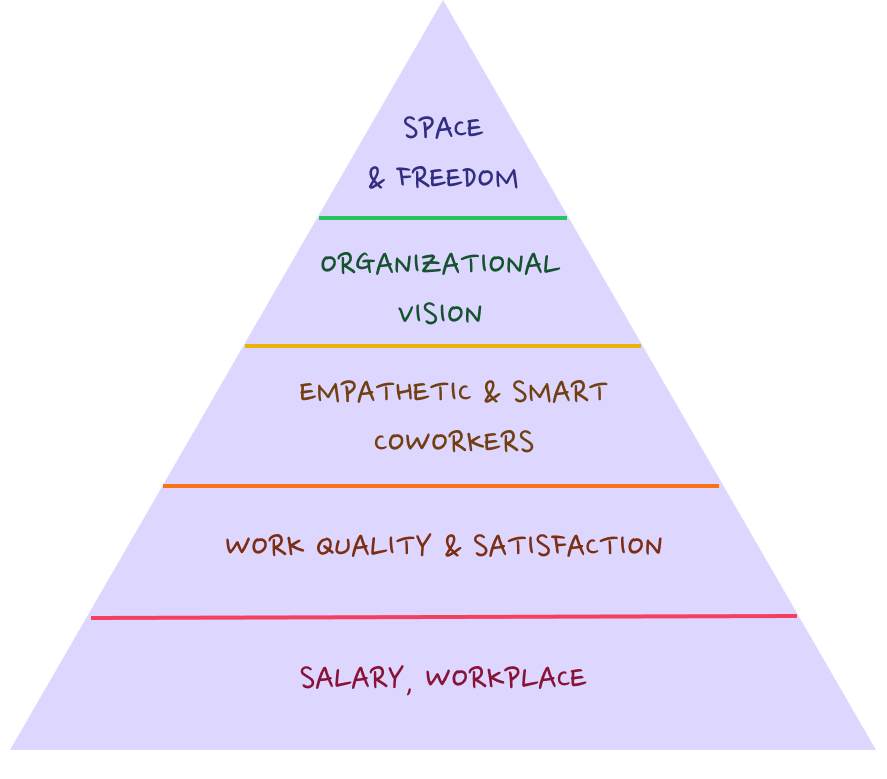Hierarchy of Employees' Needs
March 2021 • 455 words • 3 min read
A lot of content is available on the importance of company culture, and how company culture can make or break a company.
What is least talked about are things that motivate the team - not the team as a whole, but individual team members. Although leaders know that different things motivate different people, more often than not, we lead with intuition without any concrete framework.
I believe as employees in a company, we all have a hierarchy of needs, and different people could be at different levels. Understanding at what level a person is can help you customize the pitch, job, or role and create a better growth path for them.
Here is my take on the hierarchy of needs in the context of organizations and employees. These needs map almost one to one with Maslow’s Hierarchy of Needs. Moreover, all of these levels continuously overlap with each other, however, a certain amount of need must be met before a person completely migrates to the higher level.

-
Salary, Workplace - This is one of the basic needs people have. A person without a job would be hardly inspired by your vision or pitch and more often than not, choose a company with higher pay and facilities. Of course, you will find people that don’t worry a lot about these things, however, either they have minimized their needs a lot or their such needs are already taken care of.
-
Work Quality & Work Satisfaction - Once the basic needs are taken care of, people start looking at the quality of their work and the satisfaction they derive from that. Leaders should strive that people at this level don’t find their job monotonous and their work challenges them. If it is hard to change the work, the focus should be on creating forums for learning and sharing knowledge.
-
Empathetic & Smart Coworkers - This is one of the social needs we have as human beings. People look to work and collaborate with smart & empathetic coworkers that can make the work easy, interesting, and fun. In addition to hiring well, as a leader, you should strive to create a transparent culture. This makes information arbitrage difficult that in turn prevents politics creeping into the org. Another thing to ensure is that silos are not formed - silos may provide you speed, but not velocity.
-
Organizational Vision - People that get to this stage look at the impact of their work. They are trying to feel not just satisfied but accomplished. To motivate and retain these folks, as a leader, you need to communicate your vision for the organization and get real buy-in from them. On the other hand, if you find people who ideally should be at this level (example - senior executives, early employees) and don’t necessarily buy the vision, don’t hesitate to weed them out.
-
Space & Freedom - This is the self-actualization phase in an employees’ hierarchy of needs. Retaining and motivating people that reach this level is the toughest. They may completely believe in the org’s vision and maybe the cultural ambassadors of the company, however, they will leave if they don’t get enough space and freedom to operate or feel micromanaged. Simplest framework for leaders dealing with people at this level - do you trust the person and their judgment? if yes, create a few guardrails and give them freedom & space to operate under those guardrails. If your answer is no, probably it is best for the company and them that they leave.
Leading people is hard. I hope this framework will provide a bit more structure to the intuition and help you become a more effective yet empathetic leader.